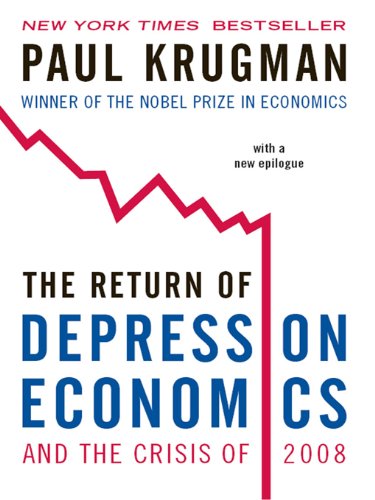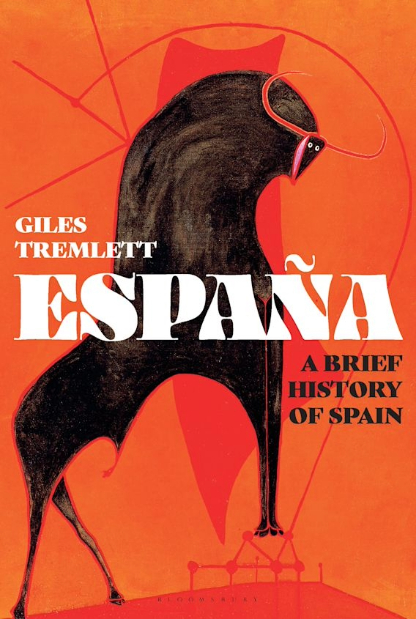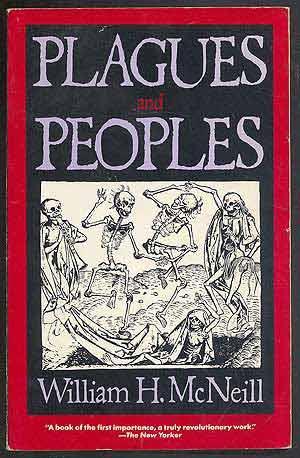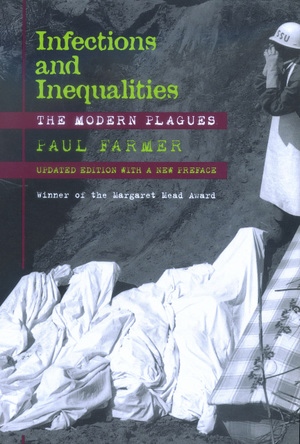Between Iran and Zion: Jewish Histories of Twentieth-Century Iran, Lior B. Sternfeld, 2019, Standford University Press, pp. 208, $40, ISBN 978-1-5036-0614-2
Speaking to a crowd of a few thousand in December 2005 in the south-eastern city of Zahedan, the then President of Iran, Mahmoud Ahmadinejad said that the Holocaust was a “myth”. “Today, they have created a myth in the name of Holocaust and consider it to be above God, religion, and prophets”, claimed Ahmadinejad in his typical anti-Semitic, Holocaust-denying fashion. A year later, in December 2006, the Institute for Political & International Studies of the Ministry of Foreign Affairs of Iran organized “The International Conference to Review the Global Vision of the Holocaust”, attended by white supremacists and Holocaust deniers, which sought to question the death of 6 million Jewish people and the existence of concentration and death camps.
Both Ahmadinejad’s statement and the conference that followed were rightly condemned by countries around the world. The UN General Assembly unanimously adopted a resolution condemning Holocaust denial in January 2007, with the body’s President, Sheikha Haya al-Khalifa of Bahrain affirming that “by this action today, the General Assembly reaffirms its condemnation of the Holocaust as a crime against humanity”.
The Jewish community of Iran, the largest in the Middle East outside of Israel, likewise condemned Ahmadinejad and his cabinet for their denial of the Holocaust. The head of the Iranian Jewish Society, Haroun Yashayaei sent an open letter to the President on January 26, 2006, in which he notably compared the Holocaust to the 1998 massacre of Kurds in Halabche or 1982 killings of Palestinians in Sabra and Shatila refugee camps. Yashayaei concluded that Holocaust denial will not achieve anything for the Iranian nation, or the Palestinian and Muslim population at large.
Ahmadinejad left office in 2013 and was replaced by Hassan Rouhani. Ahmadinejad’s departure significantly changed the rhetoric surrounding the Jewish people and the Holocaust, with Rouhani affirming that the Holocaust was a “reprehensible crime”, albeit not without condemnation by the international press. Dr. Sapir Charity Hospital, the only Jewish hospital in Tehran received a $400,000 donation by the Ministry of Health in a bid to improve the relations between and the status of Iran’s minorities. Most of all, Rouhani, upon taking office tweeted “As the sun is about to set here in Tehran, I wish all Jews, especially Iranian Jews, a blessed Rosh Hashanah”. Iranian Foreign Minister Javad Zarif followed suit and received a response from Christine Pelosi, the daughter of House Speaker Nancy, “Thanks. The New Year would be even sweeter if you would end Iran’s Holocaust denial, sir.”. To which Zarif responded, “Iran never denied it. The man who was perceived as denying it is now gone. Happy New Year”. Such overt approach towards the Jewish people by some of the highest ranking members of the government, in a country one would think of as anti-semitic, should have caused some head-scratching.
Given Ahmadinejad’s statements and the incessant saber-rattling between Israel and Iran, one would be forgiven for fearing for the safety of the Iranian Jewish community and the presumption that they face persecution in Iran, solely based on their religious affiliation. Ahmadinejad’s anti-Semitic remarks represented a distorted view of a man, but not the Iranian nation. USA Today visited Iran and interviewed a Rabbi Nejat Golshirazi of a Tehran synagogue who claimed that “We have all the facilities we need for our rituals, and we can say our prayers very freely. We never have any problems. I can even tell you that, in many cases, we are more respected than Muslims”.
Assumptions should not dictate political discourse, especially when they fly in the face of facts. This is not to say that the position of Jewish people in Iran is positive or commendable, merely that the prism through which is viewed should be widened.
Lior Sternfeld’s Between Iran and Zion tells the history of the Iranian Jewish people in the 20th century. His focus is on the period following 1941 and the role Iranian Jewish people played in the construction of the Iranian national identity. It analyzes different and fluid identities and opinions within the Jewish community in Iran and their relationship to the broader Iranian society and the State. The significance of his book rests in its grounding not solely in the Jewish context, but in a wider Iranian and inter- and trans-regional one. Moreover, Sternfeld refuses to adopt the Jewish people as a monolithic and universal category, isolated from the social and political transformations of the rapidly urbanizing Iranian society. In fact, he delves right into the change and analyzes how it impacted various Jewish identities in relation to the changing Iranian context.
This is what makes Sternfeld’s historiographical approach novel, revisionist and ultimately, interesting.
Sternfeld distinguishes his historiographical approach to the history of Iranian Jews by distancing himself from the dominant Zionist narrative. This approach, says Sternfeld, “denies Jews the possibility of living peacefully and securely anywhere but Israel”. In the lachrymose portrayal of the Jewish experience, most notably by Heinrich Graetz’s or more recently Martin Gilbert, historians overlook the possibilities of a positive one. Following the Second World War in Europe, and the emergence of the tragedy of the Holocaust, the experience of the Jewish people in Europe was often used as a prism and a paradigm that was imputed onto Jewish people living elsewhere. This view too easily called into question the status of the Jews vis-à-vis the majority within which they lived. Sternfeld approach attempts to follow in the footsteps of Salo Wittmeyer Baron, whose own “A Social and Religious History of the Jews” analyzed Jewish history in relation to other social groups at the time. Baron’s influence is felt throughout the book. The importance of Sternfeld’s rejection of the Zionist paradigm at the outset of his work cannot be overstated. Throughout the narrative it is precisely this that gives his book its shock value.
Sternfeld opens up the book with a seemingly non sequitur exploration of Polish and Iraqi migration to Iran during World War II. The chapter’s theme seems to have been chosen more for the relative novelty of evidence which is generally overlooked, than its fit into the story. One is left feeling that the point which the author might have wanted to make, that is, the fluidity of the boundaries circumventing the Iranian identity and the society’s acceptability of different cultures is what characterizes the nation, could have been illustrated using different examples. Nonetheless, the chapter remains engrossing in that it outlines a poorly explored chapter in the history of World War II.
Poland was occupied and divided by Germany and Russia in 1939. In the Soviet zone, the authorities sent approximately 1.5 million Poles to the Siberian gulags. Iran was the closest Allied destination that could absorb enough refugees from Siberia, which were to form the backbone of a force which was to contribute to the Allied war effort. Therefore, between 1941 and 1943 Iran received significant waves of migration. With the help of the International Red Cross and the American Joint Jewish Distribution Committee, approximately two to three hundred thousand refugees arrived in Iran, mostly Catholic, but also Jewish. A vibrant and lively Polish community and culture began emerging. Documentary The Lost Requiem by Khosrow Sinai tells the visual story of the period splendidly.
The Jewish community in Tehran undertook a relief effort, which saw it care for the refugees, take them into their homes, adopt orphans and organize other arrangements. While some Jewish people left for Mandatory Palestine, others chose to stay. Sternfeld estimates that of the total Polish Jewish refugee population, approximately 10% may have stayed. At 30 Tir Street in Tehran, today stands Iran’s only Ashekanzi synagogue, a vestige of the Polish Jewish population that chose to settle. Schools established by the Jewish community, such as the Ettefaq, which followed the British curriculum, were embedded within the larger community and had non-Jewish attendees. The Iranian society adapted to the influx of migrants and assimilated them into the larger tapestry of identities forming the Iranian nation. This episode attests to that.
Following the dethronement of Reza Shah in September 1941, the Iranian political sphere flourished. Clubs, magazines, and newspapers, as well as political parties, proliferated. Jewish people played a significant role in the diversified political field and were to be found in political parties and in journalism, influencing the direction the new Iranian State was headed. Jews and Armenians were prominent in the newly founded Communist Tudeh Party, which had its roots in trade unions and anti-Fascist movements. Iranian Jewish involvement in the Tudeh Party allowed for the creation of a unique identity that blended the identities of other minorities to create a unique Iranian one. Involvement in politics, in other words, created a new sense of belonging to the State. Political participation extended to journalism, with notable and widely read publications such as Rahbar, Mardum, Razm, and Nissan. These newspapers were aligned with the leftist factions and engaged in defense of Soviet Union and against imperialism. Nissan in particular critically engaged with Israel’s policy in Palestine, and portrayed Zionism as an extension of European bourgeoisie and in alignment with US imperialism. Other Zionist newspapers such as ‘Alim-i yahud and Israeiil existed, espousing a very different political orientation. However, the concerns went beyond Israel. Nissan and Bani-Adam showed unwavering support for the nationalization of the Anglo Iranian Oil Company (AIOC). They analyzed the developments in Eastern Europe, just as much as they did in Holywood. In fact, Mushfiq Hamadani’s Kaviyan was an ardent supporter of the National Front coalition, headed by Mosaddeq and Ayatollah Kashani. The plurality of political journals allowed Jewish people to go beyond their community and engage with the wider society, and the wider society to engage with the Jewish community. It also shows their involvement in the political process and their active shaping of Iranian political sphere.
Arguably the most important chapter in Sternfeld’s book analyzes the relationship between Iranian Jews and Israel. Its importance stems from the widely held assumption which holds that Israel is the homeland of the Jewish people. However, as Sternfeld shows, for most Iranian Jews, that homeland is Iran.
Sternfeld shows that about half of Iranian Jews migrated from Iran to Israel within the first three years of the creation of the state of Israel. The fact by itself would lend support to the claim that Jewish people indeed yearned for a homeland that was to be found outside of the geographical borders of the countries they found themselves in prior to the creation of the state of Israel. However, Sternfeld contextualizes these movements within the larger social and economic processes occurring in Iran at the time. For example, the year 1950 marked heightened political instability in Iran, which manifested itself in intercommunal tension, and rampant poverty in the Iranian provinces. Given that this was not confined to Jewish people alone, Sternfeld concludes that when given a chance, anyone would flee, merely for want of escaping poverty. This is significant as Iranian Jews migrated not because of Zionist convictions, but rather due to the opportunity that potential migration provided. However, the letters of those who did migrate served to dampen the spirits of potential Olim, as economic and social situation in Israel proved just as difficult as it was in Iran. Once there, Iranian Jews would face discrimination in a predominantly Ashkenazi society. Confined in the transit camps and stuck in poverty once again, they advised those back in Iran to hold off the journey.
In a way, the emergence of Isreal in 1948 helped shape the Iranian Jewish identity as it solidified their ties to Iran. Israel was seen differently by different individuals and organizations. Some viewed it as an anti-imperialist stalwart by the virtue of the fact that it was led by a nominally socialist government. Others, more religious elements such as the Otsar ha-Torah group, sought to distance themselves from the Israeli state. Yet others saw in it an alternative for the pursuit of a better life. But for all of them, Israel represented an identity that was different from their own. This, according to Sternfeld, shows the fluidity of Zionism as it manifests itself in different social contexts. The Iranian Jews were Iranian first and foremost, and their ties were to Iran.
Sternfeld book should be read for its shock value. Page after page, the reader is exposed to facts that make the reader gasp in disbelief. This goes on to show the hegemonic role a particular approach to historiography has in the shaping of popular consciousness. As if to prove his point, Sternfeld continues and tells the story of the 1979 Revolution.
Iranian Jews were active in the revolutionary activities that brought down the Shah and inaugurated the Islamic Republic. The revolutionary activity occurred under the aegis of the Association of Jewish Iranian Intellectuals (AJII), whose ideology was rooted in Iranian nationalism and radical socialism. AJII sought to connect the Jewish community to the wider Iranian social movements, even forming a close relationship with the chief ideologist of the revolution Ayatollah Taliqani. AJII drew on both Jewish and Islamic language to advance their ideals, which were practiced in camps and taught in lectures. Together, AJII and the wider Iranian society called for the overthrow of the Monarchy and the establishment of participatory democracy. Some within the movement went so far as to demand that the seat reserved for the Jewish minority since the 1906 Constitutional Revolution, be abolished and the seat contested by all those deserving of representing the community, regardless of their faith or ethnicity.
On December 11, 1978, there were five thousand Jewish people who participated in one of the largest demonstrations against the Shah. The Jewish hospital in Tehran treated the revolutionaries, regardless of their religious affiliation, and refused to cooperate with the Shah’s regime and hand them over to SAVAK. Jewish people even participated in Muslim organizations, such as the Mujahidin-i Khalq, one of the most important opposition organizations prior to the revolution. Muslim protesters greeted their Jewish brethren chanting “Jewish brother, welcome, welcome (baradar-i yahudi khush amadi, khush amadi)”. The political activism of Iranian Jews allowed for the distinction between them and Israel to be maintained and even affirmed by the Grand Ayatollah Muhammad Kazim Shari’atmadari. Even Ayatollah Khomeini commended the Jewish community for their role in treating the revolutionaries at Dr. Sapir Hospital.
Sternfeld’s account stops in the immediate aftermath of the Revolution in 1979. His relatively short narrative is tantalizing in its counter-intuitiveness. One is left yearning for the narrative to continue, which speaks to the importance of the topic the author chose to base his research on.
There are many Jewish identities, and they are actively shaped by the social and economic context within which they arise. The story of Jews in 20th century Iran rejects the universal and lachrymose category of the Jewish people and sheds light on a community that is composed of individuals and movements espousing conflicting views. Their religion does not preclude social harmony, nor does it automatically lead to a specific political worldview. Caught between their homeland and a call for the symbolic return, the Iranian Jews chose the former and stayed in Iran.




